

HOBBY REFERENCE:
All About Scales
Just to confuse things further, manufacturers have been slowly making their figures a bit larger in recent years. The extra size gives more room for details, so that a "large 15mm" figure often looks sharper than an "classic 15mm" figure - and that's because it's not actually a 15mm figure, but (often) an 18mm figure! The same is true with 25mm figures, as represented by the miniatures put out by Games Workshop as well as by Reaper's "heroic" 25mm figures (both of which measure closer to 28mm in scale).
As a final note, even figures which ostensibly are in the same scale may differ considerably in body build, head size, and general sculpting style - even when made by the same manufacturer! (For instance, older figures vs. newer figures from the same company.) Styles may differ considerably, as some manufacturers see their goal as to make scale replicas, while others concentrate on making "gaming pieces" which are inexpensive, durable, or easy to paint. Plastic figures may be sculpted in a thinner style than metal figures. Therefore, if you are concerned whether you can mix figures from different product lines or companies and have them look appropriate, you may first want to order samples from the manufacturer.
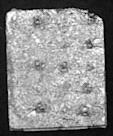

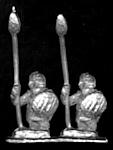
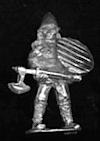
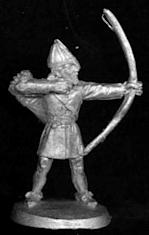
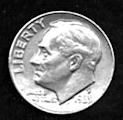
| SCALE | Where Used | Theoretical Equivalent* |
|---|---|---|
| 1/6000 | Some naval miniatures come in this scale. | .27mm |
| 1/4800 | Certain naval miniatures are available in this scale. | .34mm |
| 1/4600 | Some starships available in this scale. | .35mm |
| 1/3900 | A few starships available in this scale. | .41mm |
| 1/3000 | European manufacturers produce naval miniatures in this scale, just slightly smaller than 1/2400 scale. Also used for starships. | .54mm |
| 1/2400 | Commonly used for naval miniatures (WWI, WWII, modern). | .67mm |
| 1/1250 | Some German naval miniatures are in this scale. | 1.29mm |
| 1/1200 | Also used for naval miniatures, especially for pre-20th century ships. (In the modern periods, most gamers now use 1/2400 scale due to price and playing area size.) | 1.34mm |
| 1/900 | Some Fighting Sail era ships available in this scale. | 1.8mm |
| 2mm | At this scale, each miniature often represents an entire unit (a group of men, squadron of cavalry, battery of artillery). Recommended for those who want to depict large, epic battles in a limited table space, or who have less time for painting. Historical and science fiction. | 1/805 |
| 1/700 | One manufacturer offers rules in this scale, to be used for the paper ship kits he produces. Several ranges of plastic ships are also available in this scale. | 2.3mm |
| 1/650 | Naval miniatures. | 2.5mm |
| 1/600 | Naval miniatures. | 2.7mm |
| 1/432 | Some aircraft available in this scale. | 3.7mm |
| 1/300 | European manufacturers traditionally offer modern armor and infantry in this scale, slightly smaller than 1/285 scale. Aircraft and space fighter miniatures are also available in this scale. | 5.4mm |
| 1/285 | The popular scale in North America for modern combat, often involving armored vehicles. Periods include WWI, WWII, and contemporary. | 5.6mm |
| 6mm | Equivalent to 1/285 scale and 1/300 scales. Miniatures in this scale have the advantage of being inexpensive. The small size also means there is less visible detail to paint. In this scale it is possible to put armies on the tabletop which give the impression of masses of infantry. Figures available for fantasy, historical, and science fiction. | 1/268 |
| 1/220 | Z scale (model railroad scale). | 7mm |
| 1/200 | Another scale in which 20th Century armored vehicles and aircraft are available. Some WWII era recognition models are made in this scale. | 8mm |
| 10mm | Relatively new scale, used for fantasy, historical and science fiction. Some think this will be the popular scale of the future, larger enough to show detail but small enough to fit a large army on a tabletop. | 1/161 |
| 1/160 | Same as N scale (model railroad scale). | 10.06mm |
| 1/144 | Aircraft kits in metal and plastic are available in this scale. | 11.2mm |
| 15mm | The most popular scale for pre-20th Century wargaming. Also used for fantasy, science fiction, and 20th Century "skirmish-level" games. | 1/107 |
| 1/100 | Plastic kits of mechs (robotic fighting machines) are available in this scale. Modern military vehicles also come in this scale, in metal and plastic. | 16.1mm |
| 1/87 | Same as HO scale (model railroad scale - "HO" is "half O" scale, or 1:87.2). Several popular lines of pre- assembled and painted armored vehicles are available in this scale. | 18.5mm |
| 20mm | Becoming popular for skirmish-level 20th Century wargaming. Also used for science fiction. | 1/80.5 |
| 1/76 | Same as OO scale (British model railroad scale, alternative to HO scale). Plastic miniatures and kits are available in this scale for aircraft, ground vehicles, and soldiers. | 21.2mm |
| 1/72 | As above, though a slight bit larger. | 22.4mm |
| 25mm | Traditionally popular for pre-20th Century wargaming, though most historical gamers have now switched to 15mm. Excellent scale for display games. Continues to be popular for fantasy wargaming, historical skirmish-level games, science fiction, and for use with role-playing games. Same as railroad S gauge. | 1/64 |
| 28mm | The "large" 25mm figures are sometimes listed as being 28mm. | 1/58 |
| 30mm | Another scale used for pre-20th Century miniatures. | 1/54 |
| 1/43.5 | Traditional O gauge (railroad). Not a wargaming scale. | 37mm |
| 1/48 | Popular scale for plastic aircraft kits. Some display figures available in this scale. Also a railroad scale (P48 gauge). | 33.5mm |
| 40mm | Some American Civil War figures available in this scale. | 1/40 |
| 1/35 | Popular scale for plastic kits of armor. Occasionally used for modern gaming. | 46mm |
| 1/32 | Same as I scale (model railroad scale). Also used for display models. | 50.3mm |
| 54mm | Traditional "toy soldier" scale, no longer a common scale in miniature wargaming. However, it has been making a comeback in recent years - the large figures are said to be more convenient for older gamers. This scale is also popular for display (non-wargaming) figures. | 1/30 |
| 80mm | These and larger scales are not used for wargaming miniatures, but instead are figures which are painted and displayed as a hobby unto themselves. | 1/20 |
| 90mm | 1/18 | |
| 1/16 | 100.6mm | |
| 120mm | 1/13 | |
| 1/9 | 178.9mm | |
| * using "eye height" as the rule for height scale | ||
To theoretically convert ratio scales into height scales - and assuming here
that height scales measure to "eye height" while ratio scales measure to "head height" - divide 1610 by the scale. For
example, 1/285 figures are pretty much the same scale as
The reverse is also true: to get ratio scale, divide 1610 by the height scale.
Thus, 25mm figures are equivalent to
This means that 15mm toy soldiers are probably about 16.5mm tall overall, which makes them closer to 1/110 scale than 1/120. N-gauge figures (1/160) are about 11.25mm tall to the top of the head, which makes them about 10mm scale toy soldiers.
To get the magic number, all you need to come up with the "eye height" of the average man, measured in millimeters. The number we use is 1610 mm (about 5' 3").
Why does the magic number work? Because equivalent height and ratio scales, multiplied, should always result in the same constant (our magic number). In the simplest case, we take real life - 1:1 ratio scale, eye height of 1610 mm - and multiply 1 x 1610 = 1610. Therefore, 1610 is the constant.
So what is the magic number for a manufacturer who measures height scale to top of the head, rather than to eye level? Simply the height of the average man in millimeters - 1730 (5' 8").
| Last Updates | |
|---|---|
| 25 July 2009 | scale info updated |
| 22 November 2000 | more railroad scales added |
| 29 March 2000 | Z scale corrected |
| 28 July 1998 | height scales clarified |
| 8 July 1998 | added railroad scale info |
| 8 January 1998 | page split off |
| Comments or corrections? | |